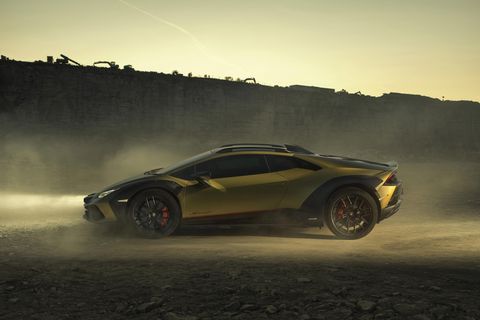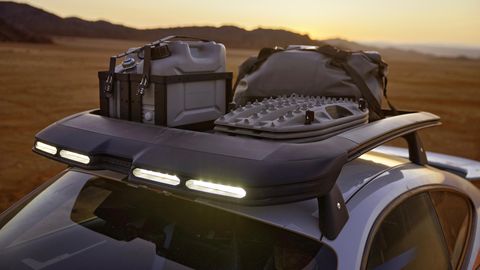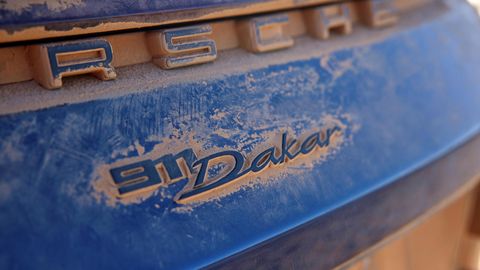The lead story from the automotive world over the past 30 years has been the rise of the sport utility vehicle. SUVs have become America’s default cars, and their success has, in turn, seen SUV-like traits permeate the entire automotive landscape.
Pickup trucks have emulated SUVs, adding more off-road capability and spacious, luxurious four-door cabins. Economy cars now position themselves as utility vehicles (see: Subaru Crosstrek, Chevy Trax). Even Rolls-Royce customers are clamoring in brand-record numbers to be chauffeured in a Cullinan.
These cars aren’t off-roaders per se. Lamborghini’s chief technical officer Rouven Mohr told Gear Patrol that slow driving and climbing obstacles in an off-road park was “not the mission.” Both cars can still tear it up on the track and rip sub-3.5 second 0-60 mph times. But they are borrowing some features from SUVs — specifically, all-terrain tires and raised, softened suspensions — to deliver an “off-track experience” on gravel and dirt.
The Huracán Sterrato and 911 Dakar are trial balloons; neither Lamborghini nor Porsche is committing to off-road-themed models beyond their limited runs (though Porsche is not ruling it out). Porsche is budgeting to sell 2,500 911 Dakars globally this year, even with an aggressive $220,000 suggested starting price. And Lamborghini revised its planned Huracán Sterrato allotment upward from 1,063 to 1,499 vehicles (about half of the brand’s total yearly Huracán production) to meet demand.
The reasons behind these cars’ popularity are not hard to decipher: they’re novel, fun and look seriously badass. But the reason we think the trend may stick around is the same reason buyers have converted to SUVs in the first place: they’re far easier to live with in the real world.
Lamborghini has already received positive feedback on the Huracán Sterrato from dealers, with buyers intrigued by the ride height, added visibility and ability to traverse potholes and driveway lips without cringing. It’s the first time they don’t have to [be afraid] in their daily usage of the car,” Mohr said.
In the case of the Sterrato, the only trade-off is being capped at 160 mph by the all-terrain tires. That could be a bummer…if you regularly track your cars at Monza. Most Lambo owners will never sniff 160 mph during everyday commutes and track days.
We suspect the trend will resonate most at the higher end of the market. Porsche and Lamborghini have shown they’ll pay a premium to chase their enthusiast pursuits (a reason Porsche and Lamborghini cater to them). A more mainstream automaker like Ford would have more trouble justifying the steep R&D costs for a niche Mustang Raptor — though that idea is being floated.
But we would not rule out an off-road sports car surfacing at the more attainable end of the market. Sporty machines like the Volkswagen Golf R and Subaru WRX already pack sophisticated all-wheel-drive systems and — in some cases — legacies in the rally world. So modifying and marketing them would, in theory, be a relatively low lift (I’ll show myself out).



























